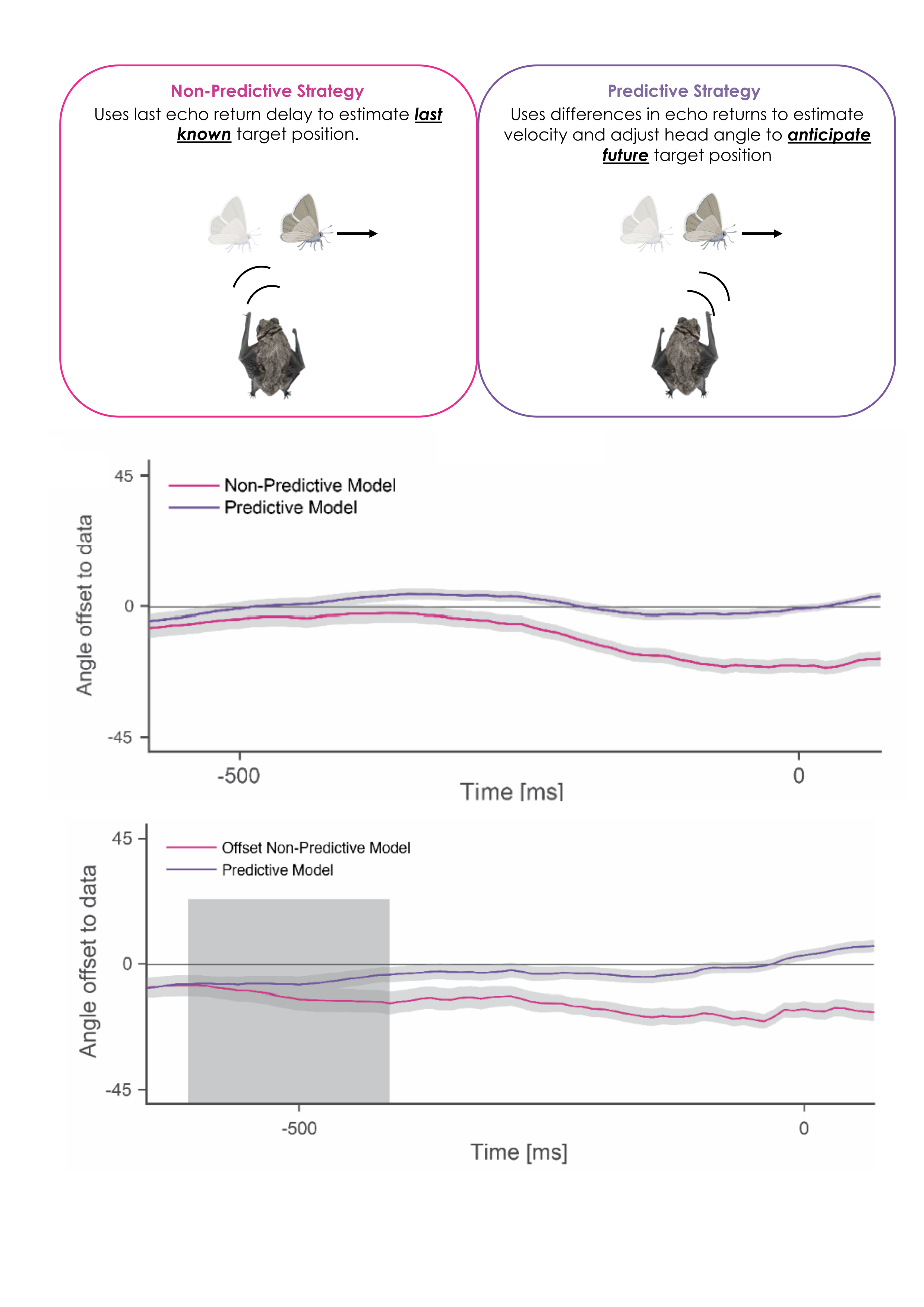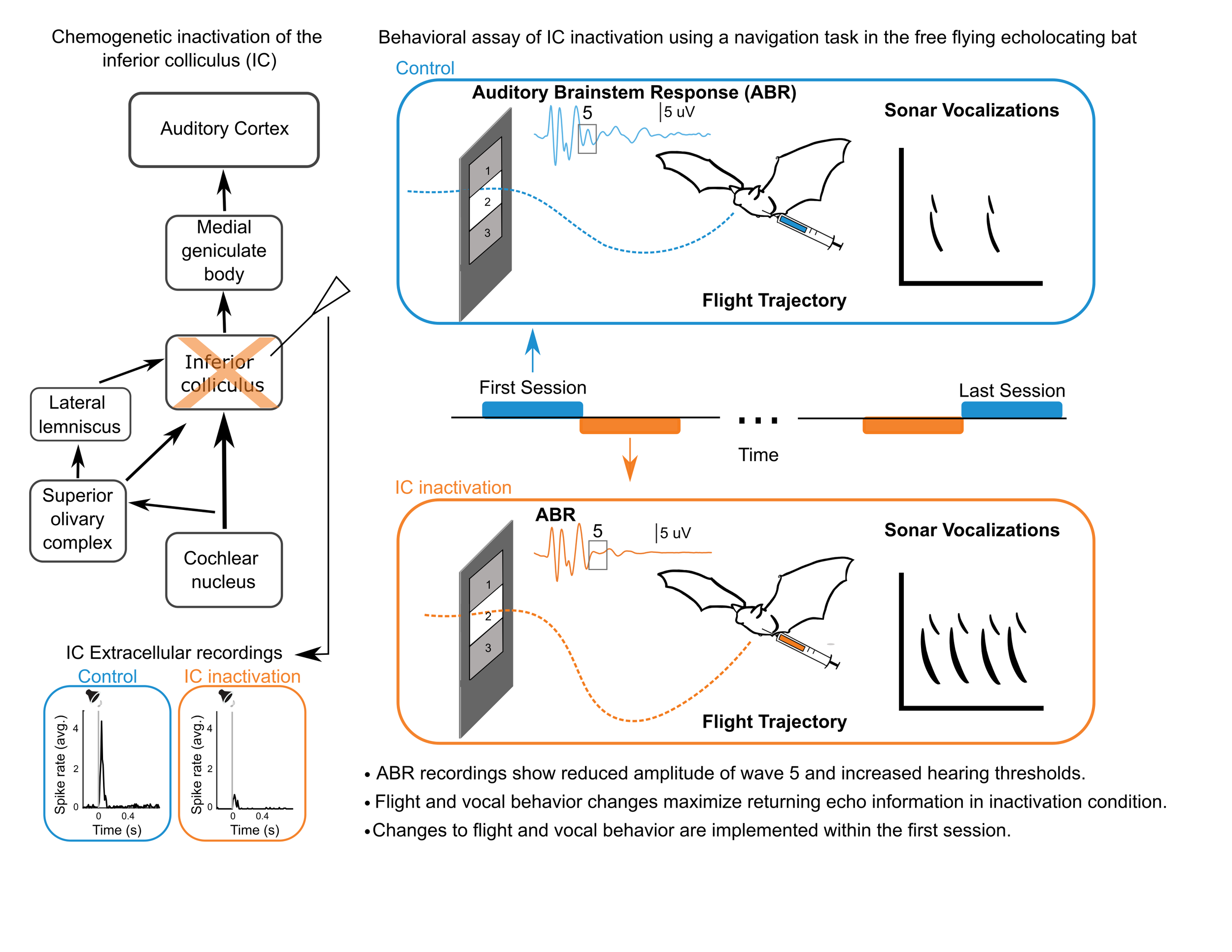Predictive Target Tracking in Echolocating Bats
At night, a hungry bat can fly through a forest hunting for insects by producing special acoustic signals and using returning echoes to locate their prey. Quickly moving insects can dart behind trees and branches, occluding themselves from the signals of these bats. Working with Dr. Angeles Salles, we asked what strategies the bats may employ when tracking these fast moving insects? Did they orient to the last known location of a target? Or were they able to anticipate where their prey may be at a future point in time?
To investigate this, we trained bats to track a moving target and measured head aim and vocal behavior. We developed computational models to examine what strategy the bats employed to track their targets. We found bats were able to integrate sequences of echoes to predict the future location of a target. Further, when we introduced an occluder to disrupt sensory access, akin to a tree blocking access to an insect, bats continued accurately tracking their target, seeming to rely on this internal model to successfully anticipate where the insect would be.
To find out more about this research, check out our paper in PNAS!
Rapid Deployment of Behavioral Adjustments During Temporary Auditory Processing Deficits
When bats face noisy environments in the wild, they can deploy a number of behavioral strategies to help them navigate effectively and continue to forage successfully. Working with Dr. Jennifer Lawlor, we asked what behavioral adjustments bats might make when they are faced with internal sensory processing deficits. To induce this disruption to auditory processing, we established the use of Designer Receptors Exclusively Activated by Designer Drugs (DREADDs) in bats, a chemogenetic tool used to reversibly inactivate excitatory neurons in the inferior colliculus (IC). We trained bats to navigate down a corridor through one of 3 possible windows, then temporarily inactivated the IC and measured flight and vocal behavior. We found bats could rapidly deploy behavioral changes, including altering flight trajectories to fly lower and closer to the corridor wall, leading to stronger returning echoes making detection easier when auditory processing is compromised. We also found bats made a series of adjustments to vocal behavior, including producing more, broader, and longer vocalizations. Bats showed a slightly reduced success rate in inactivation conditions, but were still able to perform the task, possibly due to these behavioral changes to offset sensory disruption.
To find out more about this research, check out our paper in Current Biology!
Current Research: Mormyrid Weakly Electric Fish in Social and Environmental Complexity
Like bats, mormyrid weakly electric fish have evolved a specialized sensory system where they can actively produce a signal, in this case an electrical discharge from their electric organ, and use distortions this emitted field to navigate, forage, and even communicate with other fish. These fish can live in large groups in the wild, yet there is still much unknown about the complexities of group dynamics in these fish due to the difficulty of discerning which electrical signals belong to which fish in social groups. Using video tracking and novel technological approaches, I aim to investigate the mechanisms these fish use to effectively interact in noisy environments.
Stay tuned for updates regarding this research!


